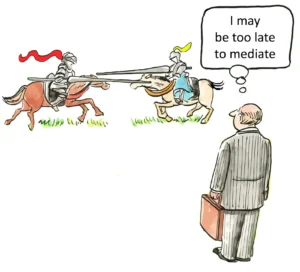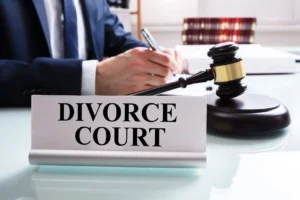Boosting Client Trust Through Attorney Video Campaigns
In today’s digital landscape, boosting client trust through attorney video campaigns has emerged as a powerful strategy for law firms seeking to differentiate themselves in an increasingly competitive market. The legal profession, traditionally reliant on word-of-mouth referrals and in-person consultations, now faces a paradigm shift as potential clients increasingly turn to online resources when seeking legal representation. Video content offers attorneys a unique opportunity to establish credibility, demonstrate expertise, and forge emotional connections with prospective clients before they ever step foot in a law office.
The statistics supporting this shift are compelling. According to recent data, only 24% of law firms currently utilize video as part of their marketing strategy, despite evidence suggesting that 83% of consumers trust video content when making decisions about professional services. This discrepancy represents both a challenge and an opportunity for forward-thinking legal professionals. Those who embrace video marketing for lawyers gain a significant competitive advantage in client acquisition and retention, while those who resist this evolution risk being overshadowed by more adaptive competitors.
The Psychology Behind Video Trust-Building
The effectiveness of attorney video campaigns in building client trust stems from fundamental aspects of human psychology. We are inherently social creatures, programmed to seek visual cues when evaluating trustworthiness. When potential clients view an attorney speaking directly to them through video, they unconsciously assess facial expressions, tone of voice, and body language—all powerful indicators of credibility that text-based content simply cannot convey.
This visual connection activates what psychologists call the “mere exposure effect,” wherein familiarity breeds preference. By the time a potential client reaches out for a consultation, they may already feel they “know” the attorney through repeated video exposure, creating a sense of comfort and trust that significantly increases conversion rates. This phenomenon explains why law firms implementing video marketing report up to a 41% increase in website traffic and a 31% boost in lead generation compared to those relying solely on text-based content.
Moreover, video content addresses the information asymmetry inherent in attorney-client relationships. Legal matters often involve complex concepts unfamiliar to laypeople, creating anxiety and uncertainty. Through educational videos that explain legal processes in accessible language, attorneys demonstrate both expertise and a commitment to client understanding. This transparency directly counters the common perception of lawyers as deliberately obscure or unnecessarily technical, replacing suspicion with confidence in the attorney’s intentions and abilities.
Types of Videos That Build Client Trust
Attorney Profile Videos
Attorney profile videos serve as the digital equivalent of a firm handshake and direct eye contact—a crucial first impression in establishing professional relationships. These videos introduce the attorney as both a qualified professional and a relatable human being, combining credentials with personality in a format that resonates with potential clients.
Effective profile videos go beyond simply listing qualifications or practice areas. They tell the attorney’s story, explaining their motivation for practicing law and showcasing their passion for helping clients. This narrative approach transforms the attorney from an abstract service provider into a three-dimensional individual with values and purpose. When potential clients see the person behind the professional title, they begin to form an emotional connection that serves as the foundation for trust.
The setting and presentation of profile videos significantly impact their effectiveness. While maintaining professional standards, attorneys should avoid overly formal or sterile environments that reinforce stereotypes of lawyers as cold or unapproachable. Instead, comfortable office settings with personal touches, or even relevant community locations, create a more inviting impression. Natural, conversational delivery rather than scripted perfection demonstrates authenticity—a quality increasingly valued by clients seeking genuine representation rather than polished performance.
Client Testimonial Videos
Few trust-building tools match the power of client testimonial videos in establishing credibility through social proof. When potential clients see and hear others describe positive experiences with an attorney, they gain confidence that their own legal matters will be handled with similar care and competence. These testimonials function as peer recommendations, leveraging the natural human tendency to trust the experiences of others in similar situations.
The most effective testimonial videos capture authentic emotion rather than scripted endorsements. Real clients speaking candidly about their challenges, their experience working with the attorney, and the positive outcomes achieved create compelling narratives that resonate with viewers facing similar legal issues. This authenticity requires careful production approaches that make clients comfortable sharing their stories while respecting confidentiality concerns and ethical guidelines.
Importantly, testimonial videos must comply with bar association regulations, which vary by jurisdiction but typically require disclaimers stating that past results do not guarantee future outcomes. Many states also prohibit misleading statements or paid testimonials without disclosure. These ethical considerations should not discourage the use of testimonials but rather guide their implementation to ensure they build trust through honest representation rather than exaggerated claims or manipulative techniques.
Educational Legal Content
Educational videos that address common legal questions position attorneys as knowledgeable resources while building trust with potential clients. These videos demonstrate expertise without explicitly selling services, creating value that attracts prospects at the research stage of their decision-making process. The most effective educational videos address specific legal concerns that align with the attorney’s practice areas, attracting qualified leads actively seeking information related to those services.
When creating educational content, attorneys should strike a balance between demonstrating expertise and maintaining accessibility. Avoiding excessive legal jargon in favor of clear explanations demonstrates the attorney’s ability to make complex legal concepts understandable—a skill highly valued by clients who fear being confused or misled by technical language. This approach showcases both knowledge and communication skills, a combination that potential clients find particularly valuable when selecting legal representation.
Educational videos also provide opportunities to address common misconceptions or concerns about legal processes, proactively resolving potential objections before they become barriers to engagement. For example, a video explaining what to expect during an initial consultation can alleviate anxiety for first-time legal clients, while content addressing fee structures or timelines creates transparency that builds confidence in the attorney’s honesty and client-centered approach.
Production Best Practices for Trust-Building Videos
Authenticity Over Perfection
In the context of legal video marketing, authenticity consistently outperforms technical perfection in building client trust. Today’s consumers have developed sophisticated filters for detecting inauthentic content, and legal clients in particular tend to be discerning and skeptical of overly polished presentations. Videos that present genuine attorneys speaking naturally about their practice establish credibility more effectively than highly scripted or artificially formal productions.
This preference for authenticity does not mean abandoning professional standards. Rather, it suggests a balanced approach that maintains appropriate expertise and decorum while allowing the attorney’s genuine personality and passion to shine through. Minor verbal hesitations or natural speech patterns actually enhance credibility rather than detract from it, as they signal unscripted honesty rather than rehearsed performance. The goal is to create content that feels like a natural conversation rather than a commercial presentation.
For testimonial videos, this authentic approach becomes even more critical. Clients should never be provided with scripts or specific language, as this undermines the very credibility the testimonial aims to establish. Instead, prepare clients by discussing general topics they might address while emphasizing that you want their genuine thoughts and experiences. This preparation helps clients organize their thoughts while preserving the authenticity of their expression—the element that makes testimonials truly powerful in building trust with potential clients.
Technical Considerations
While authenticity takes precedence over technical perfection, certain production elements significantly impact how viewers perceive video content. Poor audio quality, inadequate lighting, or distracting backgrounds can undermine even the most genuine message by creating a negative impression of the attorney’s professionalism or attention to detail. Investing in basic equipment and understanding fundamental production principles ensures that technical elements support rather than detract from trust-building efforts.
Audio quality deserves particular attention, as viewers will tolerate imperfect visuals far more readily than poor sound. External microphones provide dramatically improved audio compared to built-in camera microphones, creating clearer, more professional results even with modest equipment. Similarly, basic lighting considerations—avoiding harsh shadows or backlit situations that obscure facial expressions—significantly enhance viewer connection and perception of trustworthiness.
Location selection also influences video effectiveness. Choose quiet, well-lit spaces with professional backgrounds that reflect your firm’s image without appearing sterile or impersonal. Remove distractions from the frame and ensure that the setting complements rather than competes with your message. For testimonials, consider filming in your office to reinforce the connection to your practice, while educational content might benefit from settings that convey authority and expertise, such as a conference room or professional library with relevant legal volumes visible but not prominent.
Ethical Compliance in Video Production
Attorney video marketing must navigate various professional rules to ensure compliance with ethical standards. Bar association regulations regarding attorney advertising vary by state and often include specific guidelines for video testimonials and claims about expertise or results. Most jurisdictions prohibit false or misleading statements in attorney advertising, including video content, with this restriction extending to implied claims and visual elements that might create unrealistic expectations about outcomes.
Many states require specific disclaimers for attorney advertising, particularly when discussing past results or client testimonials. These disclaimers typically state that past results do not guarantee future outcomes and that testimonials represent individual experiences rather than typical results. Ensure that these disclaimers are clearly visible and meet any specific requirements regarding size, duration, or placement. Consider having an ethics attorney review your testimonial videos before publication to ensure compliance with all applicable rules.
Client confidentiality represents another critical consideration when creating video content, particularly testimonials. Attorneys must obtain proper informed consent before featuring clients in videos, and this consent should be documented in writing with clear parameters about how the content will be used. Even with consent, attorneys should be careful not to disclose confidential information about client matters, including background elements, documents, or context that might inadvertently reveal protected information. For practice areas involving particularly sensitive matters, consider alternative approaches to testimonials, such as actors recreating scenarios with fictional details (clearly labeled as dramatizations) or former clients discussing their experience in general terms without specific case information.
Strategic Implementation of Attorney Video Campaigns
Website Integration
A law firm’s website serves as the primary platform for showcasing video content for legal clients. Strategic placement throughout the site can significantly enhance user engagement and conversion rates. The homepage represents an ideal location for featuring video highlights, as it’s often the first point of contact for potential clients. These brief clips can create an immediate emotional connection and encourage further exploration of services.
Practice area pages benefit from videos specific to each legal specialty. When potential clients research particular services, seeing relevant video content provides social proof at a critical decision-making point. This targeted approach addresses specific concerns and questions that prospects may have about particular practice areas. Consider creating a dedicated testimonials page that houses your complete collection of client videos, organized by practice area or client type to help visitors find the most relevant examples for their situation.
Proper technical implementation ensures optimal performance and user experience. Videos should load quickly, play smoothly across devices, and include appropriate controls for user interaction. Implement proper schema markup to help search engines understand and index your video content, potentially leading to enhanced search visibility through video thumbnails in results pages. Include transcripts or closed captions with videos to improve accessibility and provide additional text for search engine indexing, enhancing both user experience and SEO performance.
Social Media Distribution
Social media platforms provide powerful channels for extending the reach of attorney videos beyond the firm’s website. Each platform requires a tailored approach to maximize engagement and effectiveness. LinkedIn serves as an excellent platform for sharing professional content, particularly for B2B legal services or corporate practice areas. The platform’s professional audience responds well to substantive educational videos that demonstrate expertise and thought leadership.
Facebook and Instagram offer opportunities to showcase the more personal aspects of a practice. These platforms favor authentic, relatable content that tells compelling stories. Client testimonials, behind-the-scenes glimpses of the firm, and attorney profiles often perform well on these channels, helping humanize the practice. Short clips highlighting emotional moments or key outcomes can drive engagement and sharing, extending reach through social networks.
YouTube warrants special attention as both a hosting platform and the second-largest search engine globally. Create a dedicated channel for the firm, organizing content into playlists by topic or practice area for easy navigation. Optimize each video with relevant keywords, detailed descriptions, and appropriate tags to improve discoverability. YouTube’s analytics provide valuable insights into viewer behavior, helping refine content strategy based on performance data and audience engagement patterns.
Email Marketing Integration
Incorporating video content into email marketing campaigns can significantly increase engagement and conversion rates. Including video thumbnails in emails has been shown to increase click-through rates by up to 300%, making this an essential strategy for law firm marketing. Welcome sequences for new subscribers should include videos that establish credibility early in the relationship, helping new contacts understand the value you provide to clients.
Practice area-specific email campaigns benefit from relevant videos that address the particular legal challenges faced by the target audience. For instance, emails focused on estate planning services might include videos explaining common misconceptions about wills and trusts. This targeted approach demonstrates specific expertise in addressing the recipient’s potential legal needs, increasing the likelihood of conversion through demonstrated relevance and value.
Newsletter content can regularly feature client success stories to maintain engagement with your email list. These ongoing testimonials reinforce your firm’s track record of positive outcomes and keep your services top-of-mind for subscribers who may need legal assistance in the future or know others who do. Brief video clips with links to full testimonials can drive traffic back to your website for deeper engagement with your content and services.
Measuring Success and Optimization
Key Performance Indicators
Implementing effective tracking mechanisms allows law firms to measure the impact of their video content and calculate return on investment. Key performance indicators for legal videos include view counts, engagement metrics (such as watch time, likes, shares, and comments), and conversion actions (like contact form submissions or consultation requests). Track these metrics consistently over time to identify trends and patterns that inform your video strategy.
Pay particular attention to differences in performance between video types, topics, and distribution channels. These insights help allocate resources to the most effective content and platforms. For instance, you might discover that testimonial videos drive more consultations from Facebook, while educational content performs better on LinkedIn for certain practice areas. This granular understanding allows for targeted optimization of both content and distribution strategies.
Beyond basic metrics, implement attribution tracking to connect video views to actual client acquisitions. By using proper tracking codes and conversion paths, you can identify which videos most effectively convert viewers into clients. This data enables you to refine your approach based on what resonates most strongly with your target audience. Many law firms use customer relationship management (CRM) systems to track how leads from video content progress through the client acquisition funnel.
Content Refinement
Use performance data to continuously improve your video content strategy. Analyze which videos generate the most engagement and conversions, then create more content that follows similar patterns. This data-driven approach maximizes the return on your video marketing investment. A/B testing provides valuable insights into specific elements that impact video performance, such as different approaches to titles, thumbnails, calls to action, and content structure.
Viewer feedback offers another valuable source of information for content refinement. Monitor comments and direct responses to identify common questions, concerns, or positive reactions. This feedback helps you address information gaps and emphasize aspects of your practice that resonate most strongly with potential clients. Consider creating follow-up videos that address frequently asked questions or expand on topics that generate significant interest.
As you refine your content strategy, maintain a balance between consistency and innovation. Establish recognizable formats and styles that viewers come to associate with your firm, while continuously exploring new approaches to keep your content fresh and engaging. This balanced approach builds brand recognition while preventing content fatigue among your audience.
Emerging Trends in Attorney Video Marketing
AI and Personalization
Artificial intelligence is transforming how law firms create and distribute video content. AI-powered analytics can identify which video elements resonate most strongly with specific audience segments, enabling more targeted and effective distribution. These insights allow firms to match particular client stories or educational topics with the prospects most likely to find them relevant and compelling, increasing conversion rates through enhanced relevance.
Personalized video experiences represent an emerging trend with significant potential for legal marketing. Advanced systems can dynamically assemble content based on viewer characteristics or behavior, creating more relevant viewing experiences. For instance, a potential client researching divorce services might automatically see testimonials from similar demographic groups or situations, increasing the content’s impact through heightened relevance and personal connection.
AI-enhanced production tools are streamlining the creation process for legal videos. Automated editing systems can identify the most compelling segments from longer interviews, suggest optimal cuts, and even generate initial edits based on emotional analysis and engagement patterns. These tools reduce production time and costs while potentially improving the effectiveness of the final product, making sophisticated video marketing more accessible to firms with limited resources.
Interactive Video Experiences
Interactive technologies are creating new possibilities for engaging potential clients through video content. These advanced formats allow viewers to choose their own path through content, selecting the aspects most relevant to their specific situation. For example, a video explaining different practice areas might allow viewers to select specific services for more detailed information, creating a personalized experience that addresses their particular legal concerns.
Interactive elements such as clickable hotspots, embedded forms, and decision trees transform passive viewing into active engagement. These features not only improve the viewer experience but also provide valuable data about viewer interests and concerns. By tracking which options viewers select, firms gain insights into potential client priorities and information needs, informing both content strategy and service development.
Virtual consultations represent another emerging application of interactive video technology. These real-time video interactions allow potential clients to discuss their legal matters directly with attorneys, combining the convenience of digital communication with the personal connection of face-to-face meetings. This hybrid approach addresses both accessibility and relationship-building needs, particularly for clients who may have mobility limitations or geographic constraints.
Short-Form Video Adaptation
The rising popularity of short-form video platforms like TikTok, Instagram Reels, and YouTube Shorts presents both challenges and opportunities for law firms. These platforms favor brief, attention-grabbing content—typically under 60 seconds—requiring adaptation of traditional legal video formats. The trend toward shorter attention spans necessitates more concise and immediately engaging testimonial content.
Creating effective short-form testimonials requires focusing on a single powerful message or emotional moment rather than attempting to compress a complete narrative. These micro-testimonials might highlight a specific outcome, an emotional reaction, or a particularly compelling statement about the firm’s impact. When strategically designed, these brief clips can capture attention and drive viewers to longer-form content for more detailed information.
The informal, authentic aesthetic favored by short-form platforms often aligns well with testimonial content. These platforms reward genuine emotion and relatability over polished production, potentially making it easier for law firms to create effective content without extensive production resources. This trend may democratize video marketing, allowing smaller firms to compete more effectively with larger competitors who have traditionally dominated video marketing.
Overcoming Common Challenges
Finding Willing Clients
One of the primary challenges in creating client testimonial videos involves finding clients willing to appear on camera. Many clients value their privacy or have concerns about publicly discussing their legal matters. To overcome this challenge, establish a systematic approach to identifying potential testimonial candidates throughout the client relationship. Train your team to recognize opportunities when clients express gratitude or satisfaction with your services, as these moments provide natural openings to discuss the possibility of a testimonial.
Timing these requests appropriately increases the likelihood of agreement. The best time to ask typically comes after a successful case conclusion when positive sentiment is highest. Approach the conversation with sensitivity, emphasizing that you understand any concerns about privacy and that participation is entirely voluntary. Explain the value of their story in helping others facing similar situations, appealing to their desire to help others rather than focusing on the benefit to your firm.
Offer incentives that provide value to clients without violating ethical guidelines. These might include professional photography sessions they can use for their own purposes, feature stories in your firm’s newsletter, or charitable donations in their name. Always ensure that any incentives comply with bar association rules regarding client testimonials and do not compromise the authenticity of the testimonial. For clients who remain uncomfortable appearing on camera, consider alternative formats such as audio testimonials with visual graphics or written testimonials featured in video format.
Maintaining Authenticity
Balancing professional production quality with authentic expression represents another significant challenge. Overly polished testimonials may appear scripted or inauthentic, undermining their credibility. Prepare clients without scripting them by discussing the general topics you’d like to cover while emphasizing that you want their genuine thoughts and experiences. Provide guidance on key points without dictating specific language, helping clients organize their thoughts while preserving the authenticity of their expression.
Create a relaxed filming environment that helps clients feel at ease. Choose comfortable settings, limit the number of people present during filming, and allow sufficient time to avoid rushing. An experienced interviewer who can establish rapport and ask questions conversationally often elicits more natural responses than formal questioning. Remember that authenticity resonates more strongly with viewers than polished perfection—minor verbal stumbles or natural speech patterns actually enhance credibility rather than detract from it.
For attorney videos, the challenge often involves helping lawyers appear natural and engaging on camera. Many attorneys feel uncomfortable in front of the camera or revert to formal “courtroom” language that can seem stiff to viewers. Address this challenge through preparation and practice, including mock interviews or rehearsals that help attorneys become comfortable with the camera while maintaining their authentic personality. Focus on conversational explanations of legal concepts rather than technical precision, helping attorneys translate their expertise into accessible content.
Resource Constraints
Many law firms face resource constraints that limit their video production capabilities. These constraints may include budget limitations, time pressures, or lack of technical expertise. To address these challenges, start with simple, high-impact videos that require minimal production resources. Client testimonials, brief educational content, and attorney introductions can be created with basic equipment while still delivering significant marketing value.
Consider outsourcing specific aspects of video production while maintaining control of content and strategy. Many freelance videographers, editors, and marketing specialists offer services at various price points, allowing you to access professional expertise without the expense of full-time staff or agency relationships. This approach can be particularly effective for periodic video projects rather than ongoing production needs.
Leverage existing resources and opportunities to create video content efficiently. For instance, record presentations at legal conferences or community events, conduct video interviews with clients already visiting your office, or create educational content based on frequently asked questions your team already addresses regularly. This approach minimizes additional time investment while creating valuable content. As you demonstrate results from initial video efforts, you can justify increased investment in more sophisticated production capabilities.
Conclusion
Boosting client trust through attorney video campaigns has evolved from a marketing luxury to a strategic necessity for law firms seeking to thrive in an increasingly digital marketplace. The power of video stems from fundamental aspects of human psychology—our inherent trust in visual information and our ability to connect emotionally with authentic stories. As video continues to dominate online content consumption, law firms that master this medium gain a significant competitive advantage in client acquisition and retention.
The multifaceted benefits of attorney video content extend beyond immediate marketing impact. Videos improve search engine visibility, enhance website engagement metrics, provide versatile content for multiple platforms, and deliver measurable returns on investment. When properly executed with attention to legal and ethical considerations, video content creates a virtuous cycle of trust-building that supports sustainable practice growth.
As we look toward the future of legal marketing, the evolution of video content will likely accelerate through technological innovation and changing consumer preferences. Firms that embrace these changes—adapting to new formats, leveraging emerging technologies, and maintaining an unwavering commitment to authentic communication—will continue to realize the full potential of this powerful marketing tool. In an industry built on trust and reputation, there are few more effective ways to demonstrate your firm’s value than through compelling visual storytelling that showcases both your expertise and your commitment to client success.
Citations:
- Video Marketing Strategies for Law Firms to Build Trust
- How Video Content Builds Trust with Potential Legal Clients
- Ethical Considerations and Best Practices in Lawyer Video Marketing
- Client Testimonials on Attorney Websites: Ethical Guidelines
- Legal Considerations for Video Marketing Campaigns
- 2025 Legal Marketing Trends: What Law Firms Need to Know
- Key Legal Marketing Statistics You Must Know in 2025
- The Future of Video Marketing in the Legal Industry
- Video Marketing Strategies for Lawyers and Law Firms
- Effective Video Marketing Strategies for Lawyers and Law Firms
- Video Marketing for Lawyers: Build Trust and Attract Clients
- The Future of Legal Marketing: Trends and Strategies
- Why Law Firms Need to Share Video Content: The Data
- Law Firm Video Marketing: Strategies for Success
- 2024 Short-Form Video Marketing Trends for Law Firms
- Stand Out, Build Trust, Win Clients: Video Strategy for Lawyers
- Creating Compelling Legal Content: Video Advertising Best Practices
- 10 Proven Video Marketing Tips for Lawyers
- Video Marketing for Legal Professionals: Building Trust and Authority
- 5-Step Law Firm Video Marketing Guide
- 10 Proven Video Marketing Tips for Lawyers
- Ultimate Guide to Video Marketing for Lawyers
- Building Trust: The Power of Law Firm Video Testimonials
- How to Use Video Content for Legal Client Acquisition
- How Law Firms Can Build Their Brands With Video Marketing
- Attorney Video Marketing Best Practices for Client Acquisition
- How Attorneys Can Effectively Leverage Video Marketing
- Video Marketing Essentials: Building Trust Through Legal Content
- Video Marketing Guide for Attorneys and Legal Professionals
- Video Marketing for Lawyers: Build Trust and Attract Clients
- Video Marketing for Lawyers: Short-Form vs. Long-Form Explained
- Ethical Considerations for Attorney Business Development
- How Lawyers Can Navigate the Ethical Minefield of Legal Advertising
- Video Marketing Strategies for Law Firms in 2024
- Marketing Your Law Firm Without Breaking Attorney Advertising Rules
- Texas Bar Guidelines for Attorney Advertising and Marketing
- Effective Video Marketing Strategy for Lawyers and Law Firms
- Video Marketing Strategies for Lawyers and Attorneys
- Texas Bar Advertising Rules, Comments and Opinions
- Ethical Considerations When Marketing Your Law Firm
- Facing Your Fears: Ethical Considerations in Legal Marketing
- Law Firm Marketing Trends for 2025: What to Expect
- Top 5 Social Media Trends for Law Firms in 2025
- Does Video Marketing Have a Role in the Legal Industry?
- Video Marketing Strategies for Law Firms to Build Trust
- Important Legal Marketing Statistics for Law Firms in 2024
- 2025 Advertising Trends Law Firms Need to Know
- Essential Legal Marketing Statistics for Law Firm Growth
- Law Firm Content Marketing Trends for 2025
- Legal Marketing Statistics: Data-Driven Insights for Attorneys
- Video Marketing for Lawyers: From TikTok to Long-Form Content
- Law Firm Marketing Statistics: Data to Drive Growth
- State Bar of Texas Rules on Client Testimonials
- How Law Firm Marketers Can Use Client Testimonials Ethically
- Law Firm Marketing Trends for 2025: Strategic Guide




















